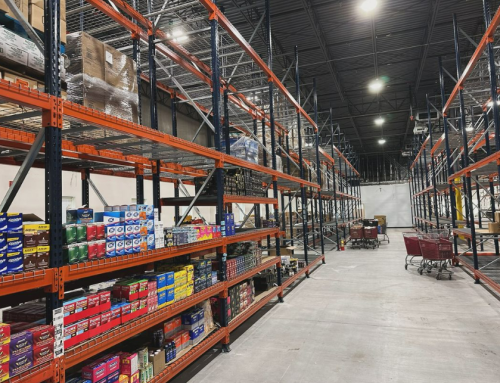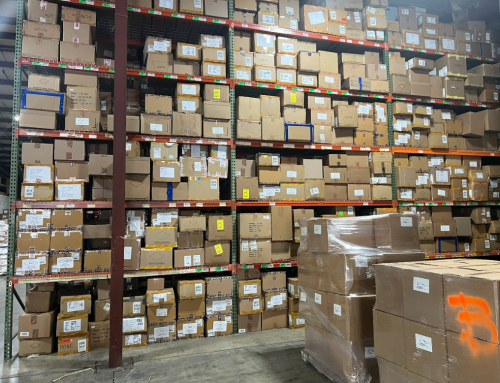Are you ready to revolutionize your warehouse operations and take your efficiency to the next level? The foundation of success in any warehouse lies in the layout of its pallet racking system. A well-designed layout not only maximizes storage space but also enhances accessibility, streamlines workflows, and ultimately boosts productivity. But with the myriad of factors to consider, where do you even begin? Fear not, because in this comprehensive guide, we’ll walk you through the essential elements to keep in mind when designing your warehouse pallet rack layout. Whether you’re optimizing an existing space or planning for a brand-new facility, Pallet Rack World is here to provide expert guidance every step of the way.
Key Factors to Consider:
1. Space Utilization
Efficient space utilization is the cornerstone of warehouse efficiency. Here are some crucial considerations:
- Vertical Space: Unlock the full potential of your warehouse by utilizing vertical height with high-rise racking systems, allowing you to maximize storage capacity without expanding your footprint.
- Aisle Width: Strike the perfect balance between narrow aisles to optimize space and wider aisles to accommodate the smooth flow of forklifts and other material handling equipment, ensuring both efficiency and safety.
- Automation Integration: Figure out if your warehouse needs to incorporate automated systems such as conveyor belts, robotic pickers, and automated guided vehicles to streamline operations.
2. Inventory Characteristics
Understanding the characteristics of your inventory is key in designing an effective pallet racking layout:
- Size and Weight: Select racking systems that can safely support the weight and dimensions of your products, preventing damage and ensuring stability. Heavy-duty racking is necessary for items with substantial weight, while adjustable racking configurations can cater to varying product sizes.
- Storage Requirements: Consider whether your inventory requires specialized storage conditions, such as temperature-controlled environments for perishable goods or bulk storage solutions for oversized items.
- Accessibility: Organize your inventory strategically, placing high-demand items in easily accessible locations to minimize picking time and optimize overall workflow efficiency.
3. Workflow Optimization
Streamlining workflows is essential for maximizing productivity and minimizing downtime in your warehouse:
- Flow Patterns: Implement efficient storage strategies such as FIFO (First In, First Out) or LIFO (Last In, First Out) to ensure proper inventory rotation and minimize the risk of product obsolescence.
- Zone Picking: Divide your warehouse into distinct zones based on product categories or order frequency, allowing for more organized and efficient picking processes.
- Safety Considerations: Prioritize workplace safety by maintaining clear pathways, providing proper signage, and adhering to relevant safety regulations, reducing the likelihood of accidents and injuries.
- Reducing Material Handling Time: Placing frequently accessed items closer to packing and shipping areas minimizes travel time for workers and improves order fulfillment speed.
4. Future Expansion and Adaptability
While designing your layout, consider future growth and adaptability. Your warehouse needs may evolve over time Therefore, it’s wise to plan for this in your racking system:
- Layout Flexibility: Choose racking systems that offer flexibility and scalability, allowing you to adapt to changing inventory needs and warehouse configurations over time.
- Future-proofing: Anticipate future storage needs and invest in racking systems that can accommodate increased inventory volumes or changes in product dimensions.
- Regular Evaluation: Continuously monitor and evaluate your warehouse operations to identify areas for improvement and anticipate future challenges.
5. Racking System Selection
Choosing the right racking system can make all the difference in optimizing your warehouse space:
- Selective Racking: Ideal for warehouses with a diverse range of inventory types and turnover rates, providing easy access to individual pallets and maximizing selectivity.
- Husky Racking: Perfect for versatility in configuration, allowing businesses to customize the layout to fit their specific storage needs.
- Push-back Racking: Suited for high-density storage of limited SKUs with high turnover rates, combining selectivity with space efficiency to maximize storage density.
Elevate Your Warehouse with Pallet Rack World
Designing an efficient pallet racking layout requires careful consideration of various factors, from space utilization to workflow optimization. Not only does Pallet Rack World provide top-notch products and expert guidance, but we also offer comprehensive installation services. Our team of experienced professionals will handle the installation process from start to finish, ensuring that your pallet racking system is set up efficiently and according to industry standards. With our installation services, you can rest assured that your warehouse will be up and running in no time, allowing you to focus on what matters most – growing your business.
Take the first step towards maximizing efficiency and streamlining operations in your warehouse today. Contact Pallet Rack World to transform your storage space into a well-organized and highly productive environment.
